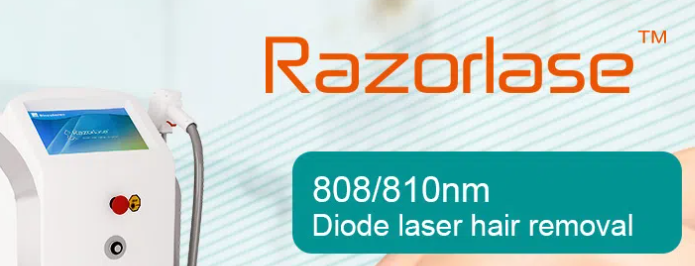Since the 90s, with the progress of science and the development of laser technology, new beauty laser machines have emerged and made very significant achievements: in the mid and late 90s, the emergence of long pulse ruby laser, emerald laser, Nd:YAG laser and semiconductor laser has made the laser hair removal technology increasingly developed and mature, the advanced sets of laser hair removal devices from the United States, Israel, Britain, Germany and Japan, etc. In the same period, laser hair removal equipment has also been increasingly used and recognized worldwide, and its future is constantly promising. The global market has a huge potential for laser aesthetics, and in the coming years the Asian market will surpass the European and American markets, with more applications for facial aesthetics and hair removal. In response to this situation, portable home laser aesthetic devices (e.g. for hair removal, wrinkle removal, etc.) are expected to become a major trend in the future.
Principles of laser hair removal equipment.
The pulse duration (or pulse width, referred to as pulse width) should be less than or equal to the thermal relaxation time (TRT) of the target tissue. The pulse duration of the laser must be long enough to cause sufficient damage to the target tissue, but the amount of heat transfer is directly proportional to the pulse duration of the laser; the longer the time, the greater the extent of thermal damage. Just as one often encounters in everyday life, if one quickly touches a hot pan with one's finger, the skin will not be burned, but if the contact lasts a little longer the skin will be burned. According to optical theory, as long as the pulse duration of the laser is less than or equal to the thermal relaxation time of the target tissue, it will not cause thermal damage to the surrounding tissue. ThermalRelaxationTime (TRT) is the time required for the heated tissue to reduce its own heat by 50% through thermal diffusion. This parameter is a measure of how quickly the target tissue can conduct heat. We now know that: hair follicles are large and have a TRT of a few milliseconds to a hundred milliseconds, so the pulse width of the laser used for hair removal is ideally required to be between a few milliseconds and a hundred milliseconds. The major difference between modern laser hair removal equipment and that of more than 10 years ago is precisely the precise control of the pulse width, which is a fundamental guarantee of the safety of modern laser treatment.

Currently the more common semiconductor laser hair removal equipment, using 808nm, 810nm wavelength of near-infrared light, this wavelength of laser can effectively penetrate the skin, directly to the target tissue (melanin) where the depth, according to the theory of selective photothermal action of melanin, adjust the appropriate pulse duration to ensure that the target tissue absorbs enough energy, through the energy conversion in the form of thermal energy damage to the target tissue. As a result, the temperature of the target cells rises sharply after absorbing the light energy, leading to the destruction of the surrounding hair follicle tissue and the removal of the hair. The appropriate energy density ensures that the target tissue is damaged by strong enough thermal damage within the appropriate pulse duration, while the surrounding tissue containing no pigment does not absorb energy, no thermal energy is converted and is virtually unaffected by thermal damage, thus guaranteeing the safety of the treatment. Semiconductor laser hair removal is particularly suitable for people with yellow skin. It usually has a pulse width of 5 to 1000ms, an energy density of 5 to 100J/cm² and a light spot of 2 to 14mm.
The laser wavelength of the emerald laser is 755nm, which is also a commonly used hair removal laser nowadays, with strong penetrating ability, better hair removal effect than 808 and 810nm semiconductor laser, and less adverse reactions. Usually the pulse width is 0.5~1000ms, the energy density is 5~100J/cm² and the light spot is 3~15mm.
Long pulse width Nd:YAG lasers are also excellent for hair removal, especially for dark coarse hairs, and are particularly suitable for patients with darker skin tones. Usually the pulse width ranges from 0.25 to 1000ms, the energy density from 10 to 600J/cm² and the light spot from 3 to 18mm.









